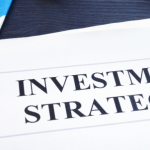Executive Summary
-
ESG scoring is evolving, with new metrics being introduced to better capture environmental, social, and governance impacts.
-
Impact investors are increasingly focused on quantifiable outcomes rather than just intentions.
-
Emerging technologies and data analytics are playing a critical role in refining ESG metrics.
-
Regulatory changes and market demands are pushing for more transparency and standardization in ESG reporting.
Introduction
In recent years, Environmental, Social, and Governance (ESG) criteria have gained significant traction among investors seeking to align their portfolios with sustainable and ethical practices. However, the traditional ESG metrics have often been criticized for lacking precision and depth. As the demand for transparent and impactful investments grows, there’s a pressing need for new ESG scoring methodologies. This article explores the future of ESG scoring and the innovative metrics that are reshaping the landscape for impact investors.
Definitions / Context
ESG Scoring refers to the evaluation of a company’s adherence to environmental, social, and governance criteria. These scores help investors identify companies with sustainable practices and ethical governance. However, traditional scoring often falls short in capturing the true impact of a company’s operations.
Benefits / Pros
-
Enhanced Precision: New metrics offer a more granular analysis of a company’s impact.
-
Data-Driven Insights: Leveraging big data and AI, investors can access real-time insights into ESG performance.
-
Alignment with Global Standards: Emerging metrics are increasingly aligned with frameworks like the UN Sustainable Development Goals (SDGs).
Risks / Cons / Challenges
-
Complex Implementation: Integrating new ESG metrics can be resource-intensive and complex for organizations.
-
Lack of Standardization: With many methodologies emerging, a lack of standardization can make comparisons difficult.
-
Data Privacy Concerns: Increased data collection for ESG scoring raises privacy and security issues.
Step-by-Step Process
How to Adapt to New ESG Metrics:
-
Conduct a Gap Analysis: Identify areas where current ESG metrics fall short.
-
Invest in Technology: Implement advanced analytics tools to enhance data collection and analysis.
-
Engage Stakeholders: Collaborate with stakeholders to ensure new metrics align with strategic goals.
-
Monitor and Adjust: Continuously monitor ESG performance and refine metrics as necessary.
GreenTech Innovations, a renewable energy firm, adopted advanced ESG metrics to measure its impact more accurately. By integrating IoT devices and data analytics, the company tracked carbon emissions and social impacts in real time, leading to a 20% improvement in its ESG score and increased investor interest.
Case Study: GreenTech Innovations
Expert Tips / Strategic Insights
-
Epiidosis Insights: “Adopting a flexible ESG framework that incorporates new metrics allows companies to adapt to regulatory changes and investor demands,” advises John Smith, ESG strategist at Epiidosis.
-
Strategic Alignment: Align ESG goals with core business objectives to drive meaningful impact and investor trust.
Tools / Resources / Calculators
-
ESG Reporting Frameworks: SASB, GRI, and TCFD provide guidelines for enhanced ESG reporting.
-
Impact Estimators: Tools like the Impact Management Project’s tool can help assess the social and environmental impact.
-
Data Analytics Platforms: Use platforms like Bloomberg Terminal for ESG data analysis.
Conclusion
The future of ESG scoring is poised for transformation with the introduction of new, precise metrics that better capture the true impact of investments. As impact investors seek more transparency and accountability, embracing these innovations will be crucial for aligning portfolios with sustainable development goals. To stay ahead, businesses and investors must adapt quickly, leveraging technology and strategic insights.























